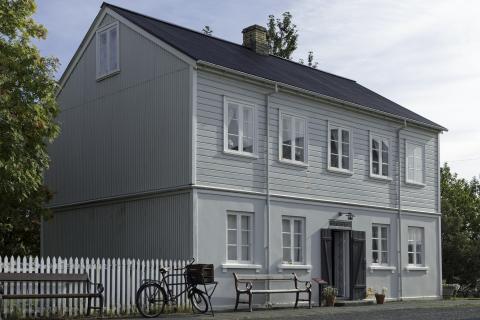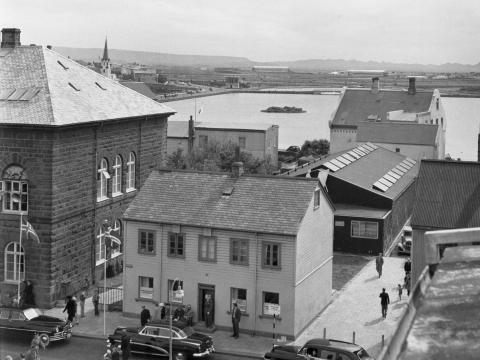
The house on Kirkjustræti 12 was known as Líkn (Relief) during the 20th century. It was built in 1848 and was the second building raised on the street after the Reykjavík Cathedral. Christian L. Møller built the house, the first half-timbered house with one floor and an attic. It was made from bricks leftover during construction work on Reykjavík Cathedral the year before. In 1882, a new floor was added and built using concrete. It was the first time that concrete had been used for construction purposes in Reykjavík. Halldór Kr. Friðriksson, who lived there for a significant period during the 19th century, was a Parliament member and led a committee charged with finding a new Parliament location in Reykjavík. In the end, he sold his potato garden to make way for the new building. The University of Iceland inherited Kirkjustræti 12 in 1911. Between 1941-1956, the Relief Nurses' Association operated there where, amongst other activities, tuberculosis examinations were carried out. The house now accommodates offices in addition to temporary and educational exhibitions.
The house was moved to the Árbær Open Air Museum in 1973.

